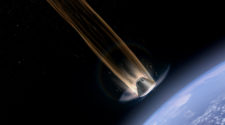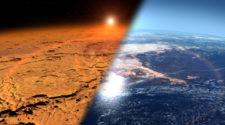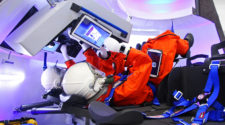
On the morning of July 12, 2014, the Orbital Science Antares rocket sits on Pad 0A at NASA’s Wallops Island facility awaiting to be hopefully be launched at 12:52 p.m. that afternoon. On top of the rocket is Orbital’s Cygnus ORB-2 spacecraft packed with cargo bound for the International Space Station. The spacecraft has been christened the “SS Janice Voss”, in honor of the late Janice Voss who flew on the space shuttle five times as a NASA Astronaut and was also an Orbital Sciences employee.
The ORB-2 mission is also carrying 16 experiments to the station, experiments with titles like; “Mold Reproduction rate in Microgravity”, “Affected Efficacy of Sprayed Enamel Coating as a Corrosion Inhibitor”, “Core-Shell Micro/Nanodisks: Microencapsulation in Two Dimensions under Microgravity”, “Polyhydroxyalkanoate Production in Zero Gravity”, and “Triops as a Protein Source”, just to name a few. These are some impressive experiments that are flying on this mission designed by researchers here on Earth.
While preparations continue towards the scheduled launch, a media event is occurring inside of the Wallops Island Visitors Center newsroom. The researchers behind the 16 experiments on board the Cygnus spacecraft are giving presentations to the media on their experiments and what they hope to learn from them.
While this may seem like any other pre-launch media presentation, it is quite different in that the researchers who designed and submitted these experiments are not from NASA or any other government agency, nor are they from a private corporation; they are instead from schools just like yours. They are regular students just like you, ranging from the 5th through 12th grades.
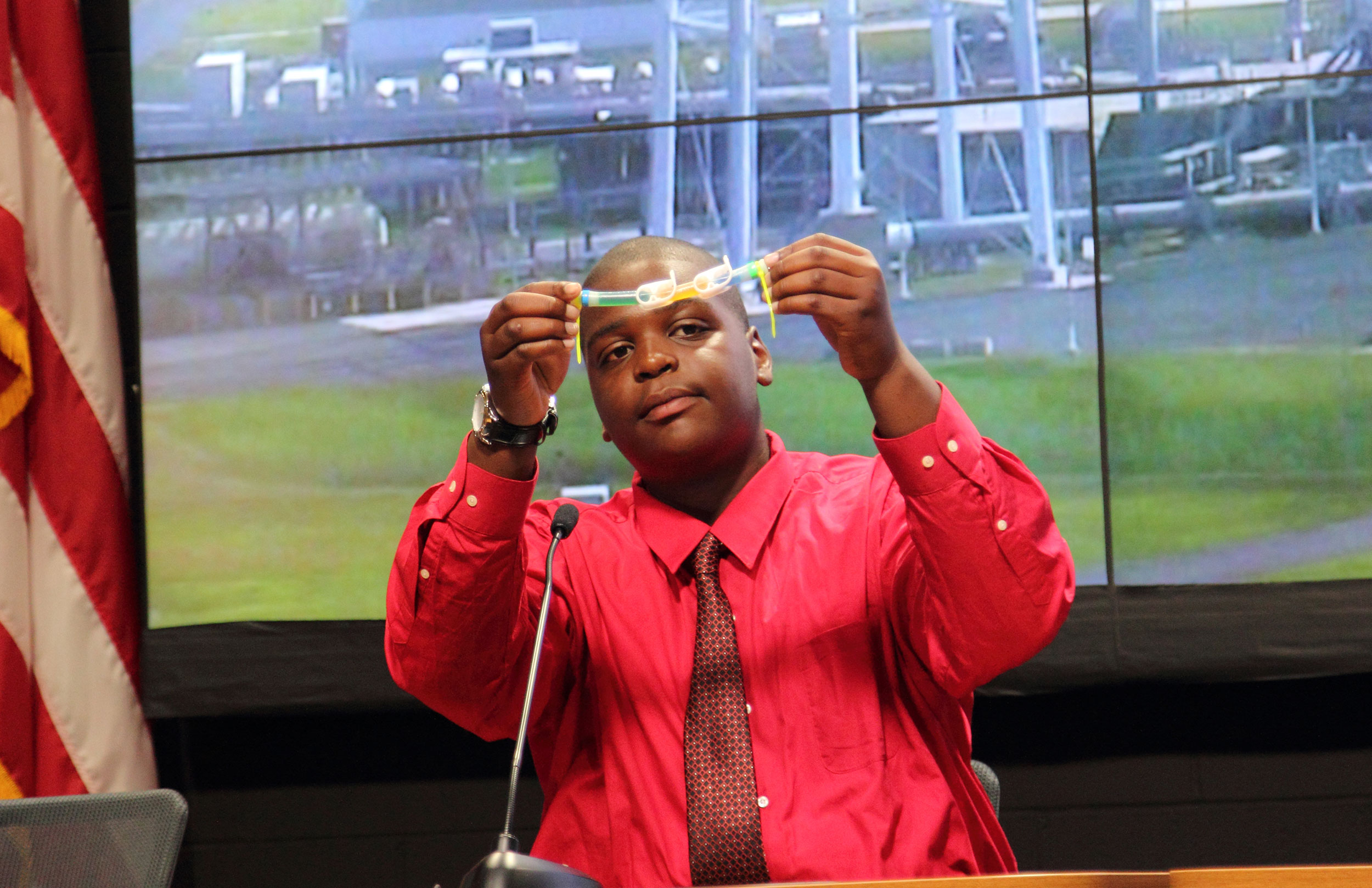
So just how did these students get their experiments on this spaceflight? It’s through a program called the Student Spaceflight Experiments Program, or SSEP. Today’s launch will be the seventh time that SSEP participants have had their experiments sent into low Earth orbit.
The program is designed to show the students how real science is done. Much like their adult counterparts in private industry who have to have their proposals reviewed and approved, these students must submit their proposal to SSEP for review and hopefully be selected to participate. Due to the extremely limited resources in both available cargo room on the spacecraft, and the astronauts’ time aboard the ISS to conduct the experiments, the selection process sends what are hopefully the most beneficial experiments into orbit. Their experiments must also pass all of NASA’s requirements for spaceflight just like any other cargo.
But I jumped ahead a bit; first each community that participates in SSEP has to conduct their own local Flight Experiment Design Competition. Student teams from across the community will be competing against other teams to have their experiment fly in low earth orbit using a real research mini-laboratory reserved for their community.
The teams from across the community must submit formal research proposals which will go through a two-step review process to select the flight experiment for the community which will in turn be submitted to SSEP for evaluation. The local design competition from the program start, through experiment design, and finally ending in their proposal submission, runs at least nine weeks.
Each community is competing to fly their experiment in low earth orbit using a mini-laboratory (pictured) aboard the ISS. Astronauts will conduct the experiment in orbit, usually within days of the departure of the latest SpaceX Dragon cargo capsule which will return the executed experiments back to earth so the teams can analyze their results. The astronauts truly enjoy working with these student experiments and after returning to Earth, many of them have followed up with the design teams of the experiment they performed to see what knowledge was gained from the experiment.
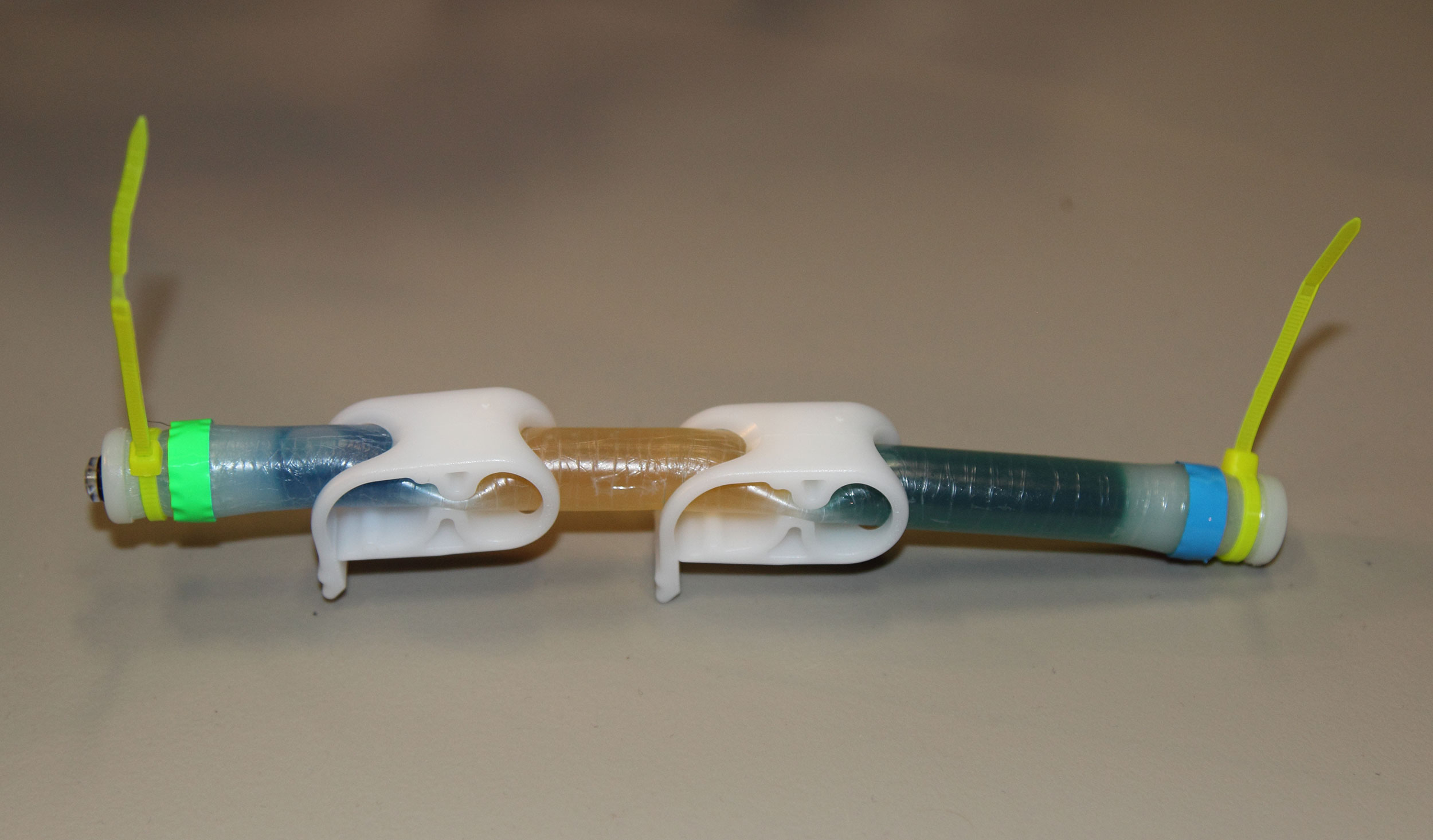
Since its inception in June of 2010, eight SSEP flight opportunities have been offered with a total of 84 communities having participated in the program. The communities have submitted, to date, a total of 7,922 flight experiment proposals. A total of 96 experiments will have flown so far with today’s launch, including 27 that flew aboard the last two flights of the Space Shuttle. If you are doing the math, you will see that some communities have actually had experiments on more than one flight! Another 19 experiments are slated to fly aboard the ORB-3 flight that, as of this writing, is currently scheduled to launch just after midnight on October 14th of this year from the Mid-Atlantic Regional Spaceport on Wallops Island, VA. More than 35,000 students, ranging from grades 5-15 have participated in experiment design and proposal writing so far.
And there is even a way for the more arts oriented student to participate. Each mission sends a number of patch designs into orbit also. If an experiment from your community is selected, up to two patches (printed on paper) from your community can also fly with the experiment. Once again, the community would conduct its own competition for patch designs and select one or two to be sent to SSEP. The patch images are returned after the flight so they can be displayed by the community.
Now let’s go back to some of those experiments mentioned above. Even with their detailed scientific names, they are not all as complex as you might believe. For example, the “Affected Efficacy of Sprayed Enamel Coating as a Corrosion Inhibitor” experiment is comparing the effectiveness of Rust-Oleum paint in microgravity as compared to its performance here on earth. Using Coca-Cola as a corrosive agent, they will expose an iron disk that was previously coated with Rust-Oleum, and another that is not coated, to the corrosive agent for 72 hours and then stop the corrosive process by absorbing the Coca-Cola with a polymer. After retrieval of their experiments from Earth orbit they will examine the discs under a microscope.
Another experiment is studying mold growth on white bread in microgravity, yet another is analyzing Lettuce growth in microgravity and how long it takes to germinate. So as you can see, while they’re looking for results to prove or disprove a theory, or to determine if something is viable (such as growing lettuce in microgravity), the experiment itself can be quite simple, it’s the science behind it that is important.
As you may already know, the Antares rocket did take flight that glorious July afternoon and the experiments are now onboard the ISS. The completed experiments are currently scheduled to return to Earth aboard the next SpaceX cargo mission.
To learn more about SSEP and how your community could have an experiment fly to the space station, visit http://ssep.ncesse.org/.

